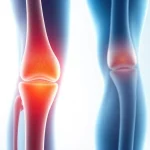Understanding Site Reliability Engineering
In today’s fast-paced digital landscape, ensuring the reliability and performance of software systems is paramount for any organization. This is where Site reliability engineering experts come into play. They leverage their skills to combine software engineering practices with IT operations, enhancing system uptime and user satisfaction. This article digs into the essentials of Site Reliability Engineering (SRE), highlighting its definition, core principles, and the significant role that SRE experts play within organizations.
Definition and Importance of Site Reliability Engineering
Site Reliability Engineering is a discipline that prioritizes reliable delivery of software applications. It originated from Google’s pursuit to create scalable and highly reliable software systems. The SRE team applies engineering principles to system administration tasks, addressing operational issues with a software mindset. By automating manual tasks, SRE enhances system efficiency and reduces human error, ultimately driving business success. The importance of SRE is underscored by its capacity to support the evolving requirements of organizations in an increasingly digital ecosystem.
Core Principles of Site Reliability Engineering
At the heart of SRE lie several core principles that guide its practice:
- Embrace Risk: SRE acknowledges that all systems have inherent risks and aims to manage these risks pragmatically by identifying acceptable levels of reliability.
- Service Level Objectives (SLOs): Establishing SLOs helps SRE teams focus on measurable reliability goals and ensure that software meets or exceeds these targets.
- Automation: SRE experts strive to automate repetitive and error-prone tasks, allowing engineers to concentrate on higher-level planning and development tasks.
- Monitoring and Incident Response: Continuous monitoring and prompt incident responses are essential for maintaining reliability and resolving potential issues before they impact users.
Role of Site Reliability Engineering Experts in Organizations
Site reliability engineering experts play a pivotal role in enhancing an organization’s operational capabilities. They act as the bridge between development and operations, ensuring that both sides meet user needs efficiently. Responsibilities include:
- Enhancing system performance through robust architecture design.
- Implementing monitoring and alerting systems.
- Creating and managing incident response plans.
- Working closely with developers to ensure code meets operational requirements.
Essential Skills of Site Reliability Engineering Experts
To thrive in the SRE role, experts must possess a blend of technical and soft skills, enabling them to navigate complex system architectures and collaborate effectively with diverse teams.
Technical Skills Required for Site Reliability Engineering
Technical competencies are critical for SRE experts. Key skills include:
- Proficiency in Programming: Familiarity with languages such as Python, Go, or Java is crucial for scripting and automation tasks.
- Understanding Systems and Networks: Deep knowledge of operating systems, networking protocols, and cloud infrastructure helps in managing and troubleshooting complex environments.
- Database Management: Expertise in managing SQL and NoSQL databases is necessary for ensuring data integrity and availability.
- Monitoring Tools: Familiarity with tools like Prometheus, Grafana, and ELK Stack for effective monitoring and observability.
Soft Skills Enhancing Collaboration Among Site Reliability Engineering Experts
Beyond technical knowledge, soft skills are essential for fostering a collaborative atmosphere:
- Effective Communication: SRE experts need to articulate complex technical concepts clearly to both technical and non-technical stakeholders.
- Problem-Solving: High-pressure situations require quick thinking and creative solutions to address incidents and outages.
- Team Collaboration: Working within cross-functional teams helps align development and operational goals and enhances the overall software lifecycle.
- Adaptability: The fast-evolving nature of technology necessitates a willingness to learn and adapt to new tools, languages, and practices.
Continuous Learning and Adaptation in Site Reliability Engineering
The landscape of technology is ever-changing, making continual learning vital for SRE experts. Participation in workshops, conferences, and online courses allows them to stay updated on emerging trends such as cloud computing, containerization, and AI in operations. Organizations that prioritize ongoing training foster a culture of innovation and adaptability, which ultimately leads to more resilient systems and processes.
Implementing Site Reliability Engineering Best Practices
For organizations to reap the benefits of SRE, it is critical to implement best practices that enhance reliability, performance, and efficiency.
Key Processes in Site Reliability Engineering
To ensure the success of SRE initiatives, organizations should adopt the following key processes:
- Incident Management: Establish clear protocols for incident detection, response, and post-mortem analysis to improve future resilience.
- Change Management: Implement a robust change management process to minimize disruptions during deployments and updates.
- Capacity Planning: Perform regular assessments of infrastructure needs to accommodate growth without compromising performance.
- Disaster Recovery Planning: Develop plans and run simulations to ensure business continuity in the face of incidents or system failures.
Tools and Technologies Used by Site Reliability Engineering Experts
SRE experts rely on a variety of tools and technologies to enhance system reliability:
- Infrastructure as Code (IaC): Tools like Terraform and Ansible allow for automated and consistent infrastructure deployments.
- Monitoring Tools: Solutions such as Nagios, Datadog, and Sentry provide insights into system health and performance.
- CI/CD Pipelines: Tools like Jenkins or GitHub Actions automate the software delivery pipeline, facilitating rapid deployment while maintaining quality.
- Container Orchestration: Kubernetes helps manage containerized applications, improving resource utilization and reliability.
Managing Incident Response in Site Reliability Engineering
Effective incident response is fundamental to site reliability. SRE experts develop comprehensive incident response strategies which typically include:
- Detection: Employing monitoring tools to detect anomalies and alerts.
- Response: Implementing a structured approach to incident management, guiding teams through troubleshooting and resolution.
- Postmortems: Conducting thorough post-incident analyses ensures that lessons are learned and strategies are refined for future incidents.
Measuring Success in Site Reliability Engineering
Measuring success is crucial in SRE, driving continuous improvement and ensuring that operational goals are met.
Performance Metrics for Site Reliability Engineering Experts
Key performance metrics that SRE experts use to assess system reliability and team performance include:
- Latency: The time taken for a request to be processed and a response generated.
- Uptime: The percentage of time that a service is operational and accessible to users.
- Error Rate: The proportion of erroneous requests compared to total requests served.
- Change Failure Rate: The percentage of changes that result in incidents or failure.
Evaluating System Performance and Reliability
Regular evaluation of system performance involves analyzing the data collected from monitoring tools, reviewing incident reports, and measuring against established SLOs. Creating dashboards that present key metrics in real-time allows teams to identify trends and potential issues proactively.
Continuous Improvement Through Feedback Loops
Implementing effective feedback loops can foster continuous improvement in SRE processes. These include soliciting feedback post-incident, regularly reviewing SLO achievements, and conducting sprint retrospectives to refine workflows. By embracing a culture of feedback, organizations can adapt and innovate their SRE practices over time.
The Future of Site Reliability Engineering
As technology evolves, so too does the practice of site reliability engineering. Staying ahead of trends and adjusting strategies to meet future challenges is essential for any organization looking to maintain operational excellence.
Trends Shaping Site Reliability Engineering Practices
Several trends are influencing the future of SRE, including:
- AI and Machine Learning: These technologies are being integrated into monitoring and incident response, allowing for automated anomaly detection and predictive analytics.
- Shift-Left Culture: Emphasizing collaboration between development and operations early in the software lifecycle promotes a culture of quality and reliability.
- Infrastructure as Code: The adoption of IaC is transforming the way infrastructure is managed, enabling rapid and consistent deployments.
Impact of Emerging Technologies on Site Reliability Engineering
Emerging technologies such as edge computing and serverless architecture are reshaping SRE practices by necessitating new approaches to deployment and monitoring. SRE experts will need to adapt their methodologies to ensure reliability across these evolving landscapes.
Preparing for the Next Generation of Site Reliability Engineering Experts
The future holds exciting possibilities for site reliability engineering. Training new talent to embrace a mindset of reliability and automation from the outset will be key. Emphasizing skills in emerging technologies, cloud computing, and advanced automation tools will help prepare the next generation of SRE experts to tackle the challenges ahead.


















